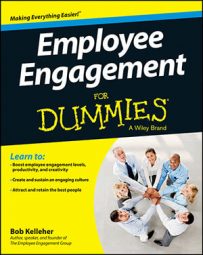Generation Y workers — which will soon be the largest workforce demographic (if they aren't already) — require a continuous flow of positive feedback. Keep them engaged by offering them training, development, and constant feedback.
Born between 1980 and 2002, this highly computer-oriented group is characterized by hope about the future, social activism, family-centricity, and the desire for diversity. Before the recession of 2008–2009, the average tenure of Generation Y, or Millennial, workers at any given job was a mere 20 months — significantly shorter than their older cohorts. Experts predict this behavior will likely recur as the economy picks back up.
Members of this generation were somewhat pampered by their Baby Boomer parents. For this generation, trophies were awarded to both winning and losing teams; seat belts and car seats were required car accessories; and in some cases, the traditional A through F school grades were replaced by the gentler “below/meeting/exceeding expectations” metric.
Attracting and hiring Generation Y
One aspect of great importance regarding their work is purpose and the notion of CSR. Gen Y in particular wants to work for a “company that cares” — one that donates to charity, is concerned about the environment, and supports volunteerism. That means that if you're looking to recruit the best of the best among Gen Y, you really need to crystallize your company's “why” as part of your company's employee value proposition.
Millennials are also quite receptive to branding, and they're willing to work for a cool brand for lower pay. If you don't believe me, walk into any Apple Store. You'll see the highest engagement with the lowest pay anywhere. These store associates are willing to accept low wages for an opportunity to work for one of the coolest brands and cultures around.
Training Generation Y
As the youngest members of the workforce, Generation Y is perhaps most in need of training. When training members of Generation Y, keep these points in mind:
Use technology and lots of variety in teaching methods. If you're speaking to members of Gen Y in a class setting, don't even think about using bulleted PowerPoint slides as your mode of delivery. Today's training professionals understand the importance of incorporating videos, movie clips, video blogs (vlogs for short), music, and other media into their presentations.
For example, when training on team development and cohesion, you might show the movie Miracle, about the U.S. men's hockey team, which won the gold medal in the 1980 Olympics, followed by a highly interactive debrief. Your Gen Y attendees will respond far more favorably than the standard (and oh-so-Boomer) data-intensive PowerPoint slides.
Don't have just one solution to case studies. Gen Yers, like their Gen X predecessors, feel they have lots to offer (no doubt due in part to the fact that their parents have been telling them how wonderful they are since birth).
And in reality, they do. They'll push you to include in your case studies solutions that are rich in technology, mobile applications, cloud computing, social media, gamification, and other key trends that Boomers may just be reading about.
Align training with the company's values and positive image. Members of Generation Y want to work for a purpose-driven organization. Linking training to your firm's values and brand will have longer-term leverage.
Allow participants to provide feedback during the training session. Be aware that participants will expect praise for providing this feedback. Consider leveraging the many real-time feedback tools available to enable your employees to be active participants in the training event.

